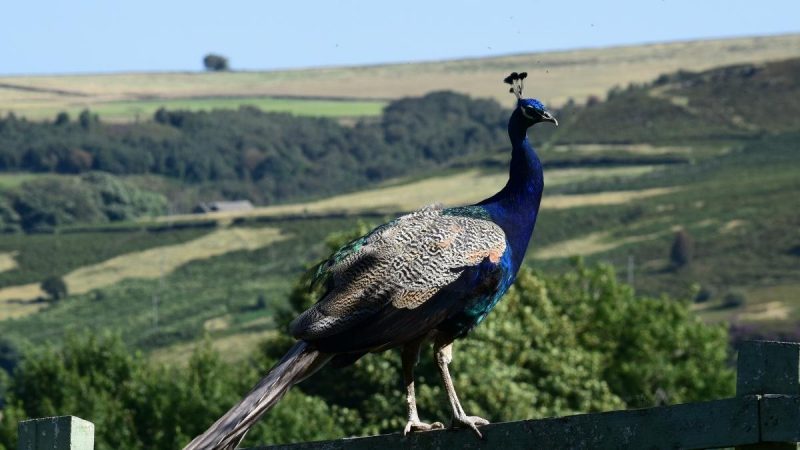In a rare and somewhat alarming development, a lowland bird like the peacock has been spotted in the forests of Uttarakhand. The sighting has intrigued wildlife experts. This unexpected appearance may be a consequence of significant ecological changes in the Himalayan region.
Peacock Spotted At Uttarakhand
The peacock, India’s national bird, is usually found in lowland regions with tropical and subtropical climates, including plains, forests, and agricultural fields. Its sudden presence in the higher elevations of Uttarakhand has raised questions. It was specifically found in the Bageshwar district. The bird was first observed in the Kafligair forest range in April, and again in the Kathayatbara forests on October 5, according to a senior forest official in the area.
Wildlife experts have pointed to various ecological changes as potential causes behind this unusual sighting. One reason may be that even the hill regions are no longer as cold as they used to be. The climate in higher altitudes could be conducive enough for habitation. Increased human activity like farming and expanding human settlements in the higher reaches of the mountains have led to warmer conditions at higher altitudes which may have led to this altitudinal migration of the peacock. But it may be a seasonal shift too.
Over the past few decades, the Himalayan region has experienced noticeable temperature increases, with milder winters and earlier onset of the monsoon. Such changes in the climate can lead to alterations in vegetation patterns, influencing the distribution of food sources for various species.
Ecological Shift?
Leading wildlife biologists and ornithologists have interpreted the sighting of the peacock in Uttarakhand’s Bageshwar district as a clear indication of the shifting ecological balance in the region. Peacocks are generally sedentary birds, and long-distance migrations are not typical for them. The fact that they are moving to higher elevations could imply that ecological conditions at lower altitudes are becoming less favourable. Moreover, the expansion of human settlements and agricultural activities has encroached on natural habitats, forcing wildlife to adapt to new environments.
The appearance of the peacock at such a high altitude is a reflection of the ongoing ecological changes in Uttarakhand’s Himalayan region.
Cover image credits: Canva

